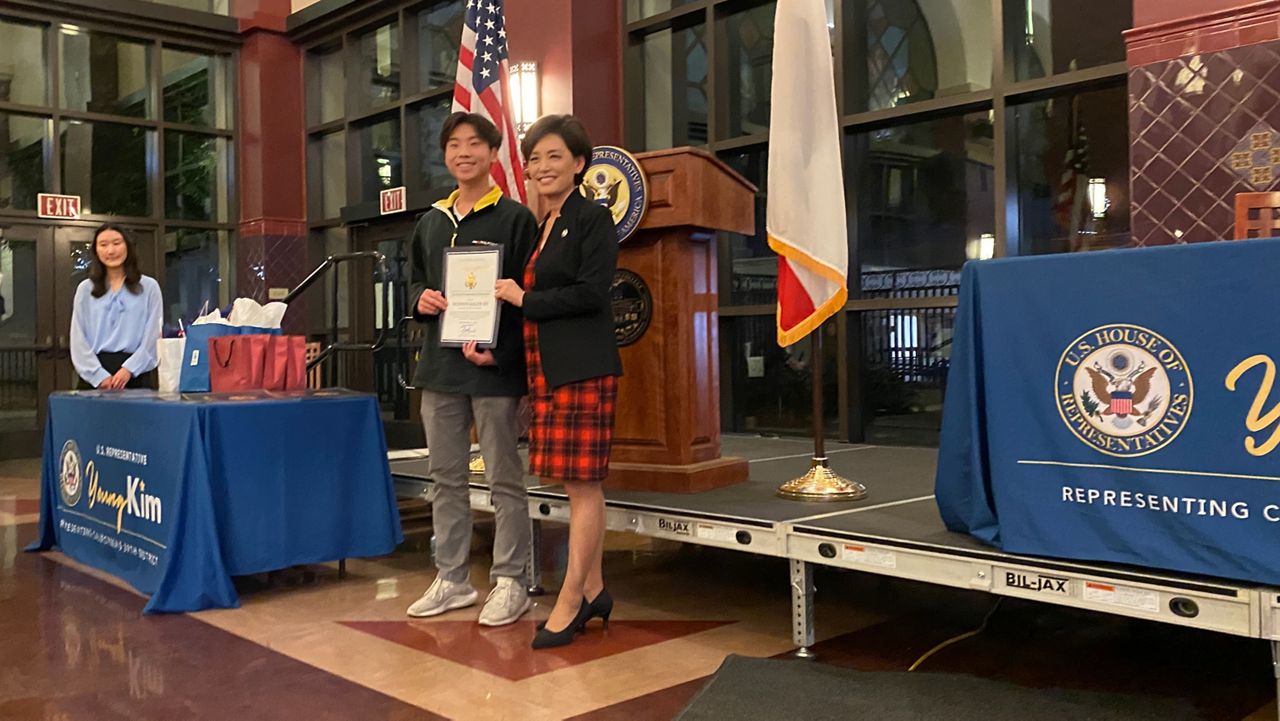FULLERTON, Calif. — On a stage at California State University, Fullerton’s dining hall, elementary school students and seniors smiled and waved at an awards ceremony for an app competition.
Sponsored by Rep. Young Kim, R-Calif., the Congressional App Challenge is one of many tools politicians and educators have used to encourage excitement among students for computer sciences.
“I’ve seen the importance of it because I’ve been exposed to it,” Kim said at the Friday event.
She’s been involved in the program since she worked for former U.S. Rep. Ed Royce, and she’s committed to continuing the program for at least another term. This year saw 192 entrants, which her office said was by far the most entrants in the history of the competition.
Kim, who will represent the newly drawn 40th District in a second term in Congress, said it was a key tool for bringing youngsters into important science, technology, engineering and math fields.
But in a panel held before the awards, parents and students heard about another opportunity.
Beth Harnick-Shapiro, a California State University, Fullerton lecturer, said many high school students could enroll in computer science courses that automatically transfer into college credits in the state higher education system.
“It’s not just for high-achieving students, but for mid-achieving students too,” she said. “Sometimes we need to do to see what we can do.”
Coding has become an increasingly important part of the U.S. education system, as schools across the country have added programs.
A Gallup report showed that 40% of U.S. schools offered coding classes in 2016.
A slew of independent programs and schools have proliferated in recent years as parents look to get their students a leg up.
Newer companies like Magikid Robotics Lab, which introduces kindergartners to coding through simple robotics lessons, are part of the equation. And online competitors like Hopscotch, which allows students to code simple games, are expanding the market.
Options exist for adults looking to make a career move. Coding boot camps have become a more popular business strategy for universities, including MIT and the University of California Irvine, to name just a few schools pushing high-intensity courses.
Harnick-Shapiro said it’s important for everyone to improve their understanding of coding, and students who pursue it in high school can get a head start.
“What this means is that students interested in computing and computer science can enter college as a junior,” she said of the co-enrollment program.
These programs are offered in many California school districts, she said, and because they’ve been reviewed and accepted by state school systems, students don’t have to apply for the credits. They’re automatically awarded upon enrollment.
Harnick-Shapiro said she wants to get a minor developed for cyber security allowing students to cross disciplines. That way, high schoolers interested in criminal justice can head into college already prepared with technical knowledge and skills.
“It helps to promote exploration and keep students engaged,” she said.



